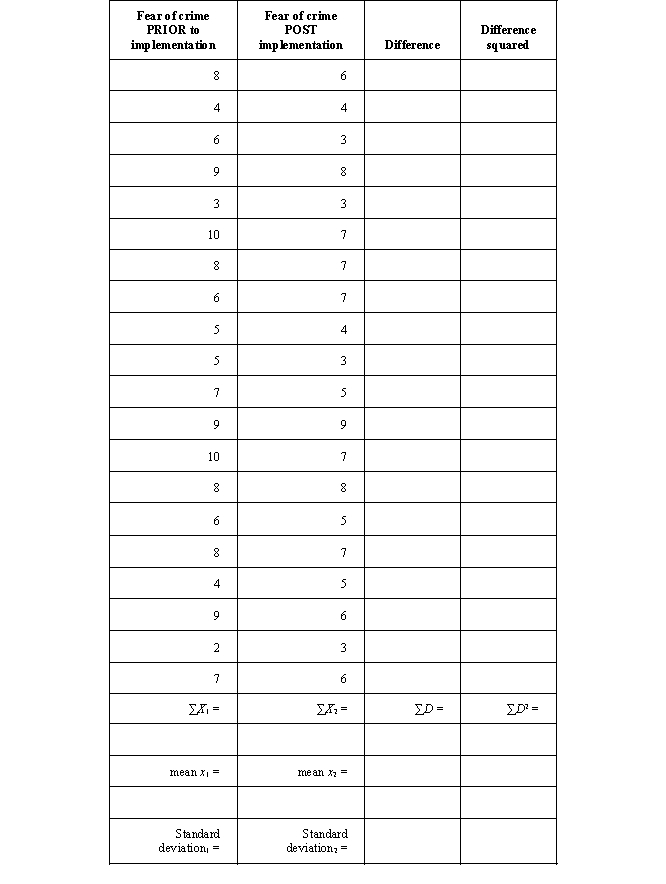Essay
The local police department decided to implement a storefront ministation in a crime-ridden neighborhood with the objective to improve the mutual trust between residents and police officers and to decrease fear of crime. A random sample of 20 residents was selected. Prior to implementation, these residents indicated their level of fear of crime (on a scale of 1 to 10 with 10 being the highest level of fear of crime). The same sample was asked 5 months after implementation to report their current level of fear of crime. The results of this question are indicated in the table below.
a. State your null and alternative hypotheses (one tailed because previous research shows that the implementation of community policing measures tends to decreases levels of fear of crime).
b. Compute the degrees of freedom.
c. State the decision rule.
d. Compute (for both dependent samples) the sums, means, and standard deviations, differences, and squared differences (use the table below).
e. Compute t (using formula 6-3).
f. Interpret the t score.
g. Calculate the measure of association with eta squared (η2) using formula 6-5. Interpret your findings.

Correct Answer:

Verified
Correct Answer:
Verified
Q3: You are conducting a study and are
Q4: Indicate whether the following is a type
Q5: You want to compare means of two
Q6: Assume you want to compare the means
Q7: Let us practice 5c and 5d some
Q8: Fill in the blank:<br>a. By selecting a
Q9: The t test is the appropriate test
Q11: Assume you are in possession of data
Q12: To decrease the risk of a type
Q13: Assume that your campus experienced an